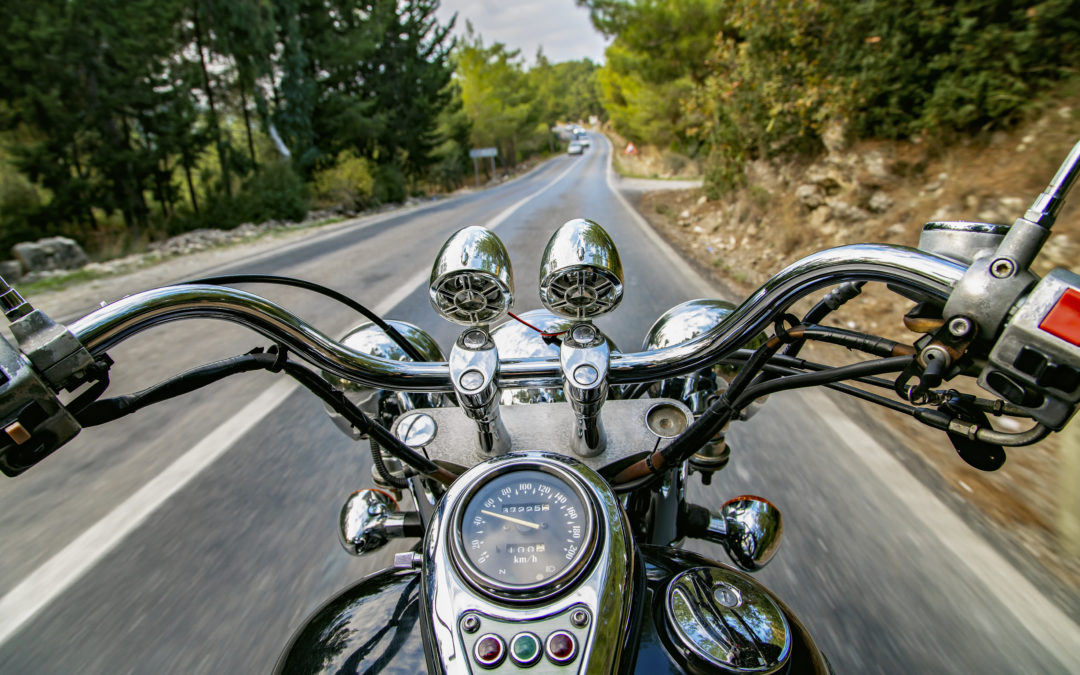If you’re a Texas rider, planning on passing through Texas on a motorcycle road trip or thinking about getting your motorcycle license in Texas, here’s what you need to know.
Familiarize Yourself with the Official Texas Motorcycle Operator Manual
First, you might want to download Texas’ Motorcycle Operator Training Manual, which is published by the Motorcycle Operator Program of Texas. You’ll likely find answers to most or all of your questions in the training manual.
Can motorcyclists violate any Texas parking laws that apply to cars?
No – you can’t park in handicapped spots, striped areas or sidewalks. Chances are if it’s illegal for a car to park somewhere it’s also illegal for a motorcycle to park there. The only exceptions are clearly marked motorcycle-only parking spots.
Do I have to wear a helmet when riding a motorcycle in Texas?
Not if you are 21 years old or older, have passed a motorcycle safety course and have health insurance coverage that covers you for motorcycle accident injuries. Riders without adequate insurance and younger riders and passengers must wear a helmet that meets Federal Motor Vehicle Safety Standard #218 (FMVSS-218). It’s worth noting that a police officer cannot legally pull you over solely to confirm you have passed the motorcycle safety course and have adequate health insurance. That doesn’t mean they can’t come up with some other excuse to pull you over if you aren’t wearing a helmet and then check.
Can children be passengers on motorcycles?
Children younger than five years of age are now allowed to ride on motorcycles unless they are in a sidecar.
Is there any equipment that’s not required on a motorcycle in Texas?
Yes – Texas motorcycles aren’t required to have turn signals. If your bike does have turn signals, they are required to work. There’s also no explicit decibel restriction on motorcycle mufflers/exhaust systems, although muffler cutouts, bypasses or similar devices are illegal on motor vehicles in the state. You’ll need pretty much everything else on your bike:
- At least one mirror
- Head lamp, tail lamp, stop lamp, license plate lamp (at least one of each)
- Footrests and handholds for passengers
- Brakes
- A horn
How old do you have to be to get a motorcycle license?
You can apply for a motorcycle license at 15 years of age, but you’ll be restricted to motorcycles with no more than 250 cubic centimeters of piston displacement until you turn 16. However, there’s a lot more required than just being 15 and having a learner license to get your motorcycle learner permit. You need to:
- Visit a Texas Driver License office and apply in person with a parent
- Provide a certificate of completion for a Motorcycle Safety Course
- Have a Class C provisional license
- Have proof you’ve done the necessary 32 hours of classroom education (DE-964 certificate) and the 32 hours of “Parent Taught Driver Education” (form PTDE-964)
- Provide a signed “Verification of Enrollment and Attendance” form from your high school
- Pass the mandatory motorcycle skills exam
Not only will you need to bring your own motorcycle to take the motorcycle skill exam, but you’ll also need another person and car (presumably a parent or guardian) to follow you while you ride the motorcycle during the exam. You’ll also need to take a Motorcycle Safety Course. To qualify for the motorcycle safety course, minors (riders younger than 18) must:
- Have at least a Class C learner license (provisional driver’s license)
- Complete 32 hours of classroom driver education; or
- Obtain a certificate of completion for the classroom part of a driver’s education course (which is often taught in high schools)
If you’re older than 18 the process is much easier. You will still need to take the motorcycle driving test unless:
- You’ve already passed a motorcycle safety course and you have a valid and unrestricted Class A, B or C license
- You’re transferring a valid motorcycle license from another state
- You’re only applying for a motorcycle learner’s license
What does a motorcycle learner’s license (J restriction) entitle you to do?
You’re allowed to ride like normal so long as there’s a licensed motorcycle rider (age 21 or older) in sight and watching you. You can learn more about Texas’ motorcycle licensing laws from the Texas Department of Public Safety’s website.
Is lane splitting illegal in Texas?
Like most states Texas doesn’t have a law explicitly forbidding lane splitting, but for all intents and purposes, yes. You can refer to Texas Transportation Code § 545.060 for the exact wording, but you’re essentially required to stay within a single lane.
What should you do after being involved in a multi-vehicle motorcycle accident in Houston?
If another driver caused your motorcycle accident, you should strongly consider contacting a motorcycle accident personal injury attorney. At the Weycer Law Firm, we’re committed to helping injured riders get the compensation they need to physically and financially recover from their injuries. Call us at (713) 668-4545 to schedule a free case evaluation.

